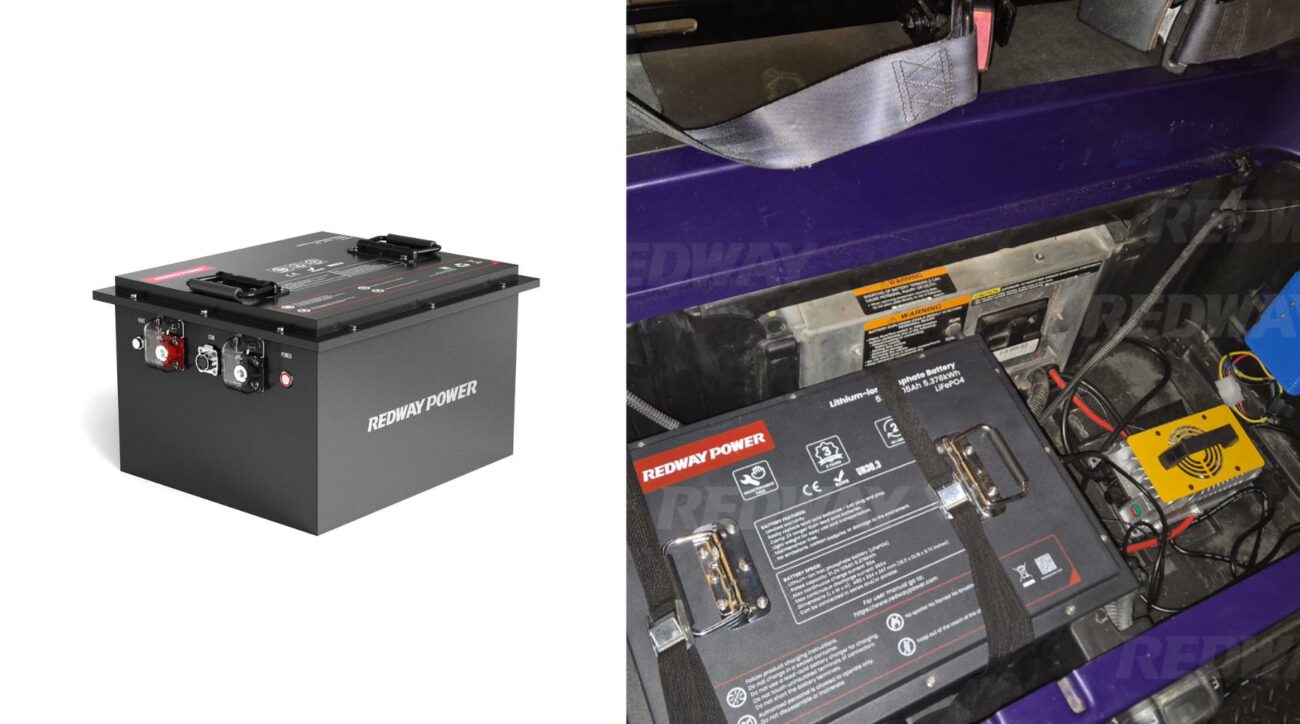Golf cart batteries typically cost between $800-$1,500 for a full set (6-8 batteries), depending on type (lead-acid or lithium), voltage, brand, and retailer. Lead-acid batteries are cheaper upfront ($100-$200 each) but require maintenance, while lithium batteries ($300-$1,000+ each) last longer and save costs over time.
72V 200Ah Lithium Golf Cart Battery
What Factors Influence Golf Cart Battery Prices?
Battery type (lead-acid vs. lithium), voltage (6V, 8V, 12V), brand reputation (Trojan, Duracell, or EcoBattery), and retailer markup impact costs. Installation fees, warranties, and recycling old batteries add $50-$300 extra. Lithium batteries have higher upfront costs but lower lifetime expenses due to longer lifespan (10+ years vs. 4-6 years for lead-acid).
48V 100Ah Lithium Golf Cart Battery
How Do Lead-Acid and Lithium Batteries Compare in Cost?
Lead-acid batteries cost $100-$200 per unit but require regular watering and last 4-6 years. Lithium batteries cost $300-$1,000+ each but last 10+ years with zero maintenance. Over a decade, lithium saves $500-$1,200 in replacement and maintenance costs. Example: A 48V lithium pack ($3,500) outperforms lead-acid ($1,200) long-term.
48V 160Ah Lithium Golf Cart Battery
Where Can You Buy Affordable Golf Cart Batteries?
Top retailers include Amazon, Golf Cart Garage, and Batteries Plus. Local dealers offer installation support, while online stores provide discounts. Refurbished lead-acid batteries cost 30-50% less but have shorter warranties. Always check for UL certification and customer reviews to avoid counterfeit products.
72V 100Ah Lithium Golf Cart Battery
When purchasing from local dealerships, ask about seasonal promotions or trade-in programs for old batteries. Many retailers offer free shipping for online orders exceeding $1,000. For lithium batteries, consider specialized vendors like EcoBattery or BigBattery that provide tailored voltage configurations. Below is a price comparison table for popular 8V batteries:
| Brand | Type | Price | Warranty |
|---|---|---|---|
| Trojan | Lead-Acid | $165 | 18 months |
| Duracell | AGM | $189 | 24 months |
| EcoBattery | Lithium | $699 | 10 years |
What Are Hidden Costs of Golf Cart Battery Ownership?
Hidden costs include chargers ($150-$500), maintenance tools ($20-$100), and disposal fees ($10-$50 per battery). Lead-acid requires distilled water and terminal cleaning, while lithium needs compatible chargers. Improper storage can shorten lifespan, adding replacement costs.
48V 100Ah Lithium Golf Cart Battery
How Can You Extend Golf Cart Battery Lifespan?
Keep batteries fully charged, avoid deep discharges, and store in cool, dry places. For lead-acid, check water levels monthly. Lithium batteries benefit from partial discharges (20-80% charge cycles). Use a quality charger and avoid overloading the cart.
36V 100Ah Lithium Golf Cart Battery
Implement a quarterly maintenance routine: clean terminals with baking soda solutions, torque connections to 10-12 ft-lbs, and test voltage with a multimeter. For lithium models, avoid exposing batteries to temperatures below -4°F (-20°C). Rotate battery positions every 6 months if using lead-acid to ensure even wear. Consider investing in a battery monitoring system ($80-$200) to track cell health and prevent unexpected failures.
“Lithium batteries are revolutionizing golf carts. While pricier upfront, their 3,000+ cycle lifespan reduces long-term costs by 60%. At Redway, we’ve seen customers save $1,200+ over 10 years by switching to lithium. Always prioritize batteries with thermal management systems for safety.” – Redway Power Solutions Expert
FAQ
- How Often Should I Replace Golf Cart Batteries?
- Lead-acid batteries last 4-6 years; lithium lasts 10+ years with proper care. Replace lead-acid when capacity drops below 70% or voltage fluctuates abnormally.
- Can I Mix Old and New Golf Cart Batteries?
- No. Mixing ages or types reduces performance and lifespan. Always replace all batteries simultaneously for optimal voltage consistency.
- Are Lithium Batteries Worth the Higher Cost?
- Yes, for frequent users. Lithium’s longer lifespan, faster charging, and zero maintenance justify the upfront cost over time. Occasional users may prefer lead-acid for lower initial investment.





